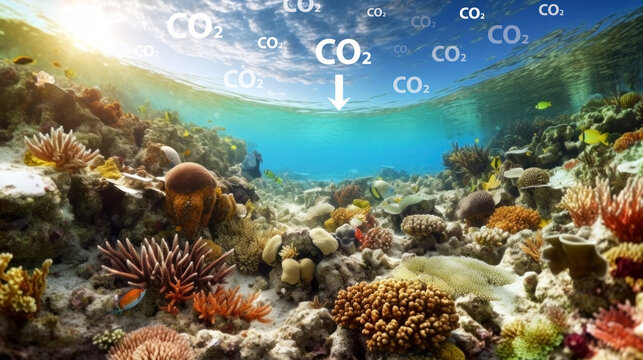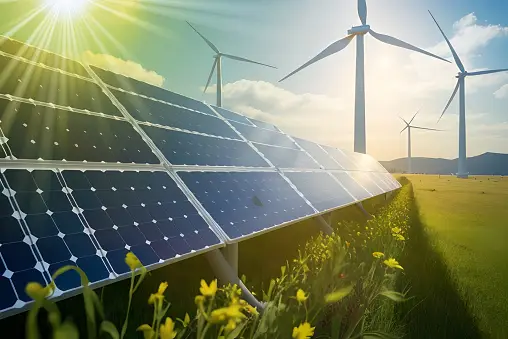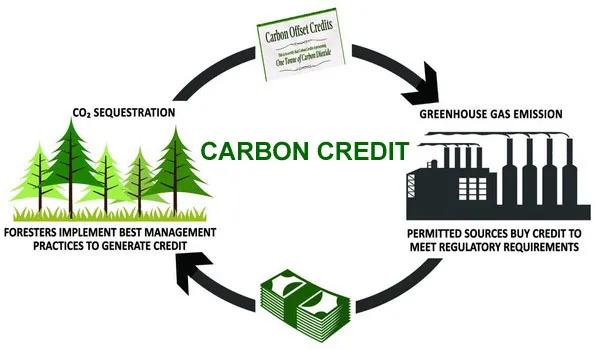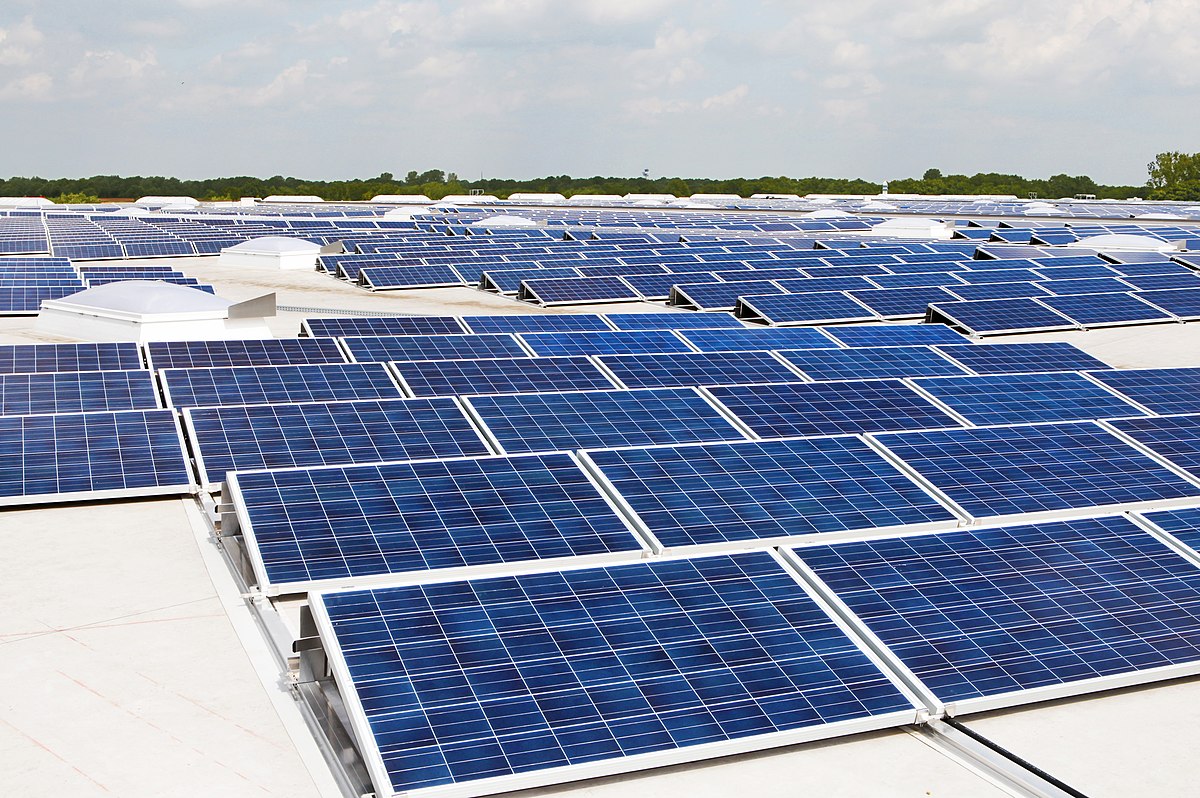A Call for Green Energy Transition: 5 Negative Effects of Fossil Fuels on Ecosystems
In the pursuit of progress and economic growth, humanity has long relied on fossil fuels as a primary source of energy.
However, this dependence has exacted a toll on the delicate balance of our ecosystems.
It is crucial to recognize and address the negative effects of fossil fuels on the environment.
Compelling us to this urgent call for Green Energy transition and more sustainable energy alternatives.
1. Climate Change Catastrophe:
Fossil fuels contribute significantly to climate change by releasing large quantities of greenhouse gases into the atmosphere.
The resultant global warming disrupts weather patterns, leading to extreme events such as hurricanes, droughts, and heatwaves.
These changes pose a severe threat to ecosystems, impacting biodiversity, and the ability of species to survive and thrive, hence the need for a Green Energy Transition.
2. Air and Water Pollution Menace:
Green Energy Transition will definitely put to a halt the combustion of fossil fuels releases pollutants that contaminate both the air we breathe and the water we rely on.
From smog-filled skies to polluted water bodies, the consequences are dire. This pollution not only harms human health but also wreaks havoc on ecosystems, affecting plants, animals, and aquatic life.
3. Habitat Degradation and Loss:
The extraction of fossil fuels, whether through mining or drilling, often results in habitat destruction.
This process displaces numerous species and disrupts the intricate balance of ecosystems.
The loss of natural habitats threatens the survival of countless plants and animals, leading to a decline in biodiversity.
But with total and complete Green Energy Transition all these would become a thing of the past.

4. Ocean Acidification:
Fossil fuel emissions contribute to the acidification of our oceans as excess carbon dioxide is absorbed by seawater.
This phenomenon poses a grave threat to marine life, particularly organisms with calcium carbonate shells, such as corals and mollusks.
The imbalance in ocean pH levels jeopardizes entire marine ecosystems, affecting fisheries and the livelihoods of communities dependent on them.
5. Resource Depletion and Strain:
The extraction and consumption of fossil fuels lead to the depletion of finite resources, causing strain on ecosystems.
Whether through deforestation for oil exploration or the over-exploitation of resources, ecosystems bear the burden.
This strain cascades through the food chain, affecting the health and stability of entire ecosystems.
In light of these negative effects, the imperative for a green energy transition becomes undeniable.

Embracing renewable and sustainable energy sources is not merely an environmental choice; it is a commitment to the preservation and restoration of our ecosystems.
The time has come for a collective effort to mitigate the damages wrought by fossil fuels and pave the way for a cleaner, healthier, and more sustainable future.
Fossil fuels, including coal, oil, and natural gas, have fueled the engine of industrialization but at a profound cost to our planet’s ecosystems.
The combustion of these fuels releases harmful pollutants, such as carbon dioxide (CO2), methane (CH4), and nitrogen oxides (NOx), leading to a domino effect of environmental degradation.
1. Climate Change Crisis:
The excessive release of greenhouse gases, especially CO2, contributes significantly to global warming and climate change.
Rising temperatures disrupt ecosystems, affecting wildlife habitats, migration patterns, and precipitation cycles.
The resultant extreme weather events exacerbate the vulnerability of various species, pushing them towards endangerment or extinction.
2. Air and Water Pollution:
Burning fossil fuels emits not only CO2 but also pollutants that contaminate the air and water.
Respiratory diseases in humans and wildlife, acid rain, and water toxicity are direct consequences, causing harm to both terrestrial and aquatic ecosystems.
3. Habitat Destruction:
Extraction processes, such as mining for coal and drilling for oil, lead to the destruction of natural habitats.
This directly impacts biodiversity, as many species lose their homes and struggle to adapt, often facing population decline.
The Imperative Shift: Green Energy Solutions
Recognizing the urgency of the situation, a global transition to green energy sources becomes imperative for the preservation of ecosystems and the well-being of future generations.
1. Renewable Energy Adoption:
Harnessing the power of renewable energy sources, such as solar, wind, and hydroelectric power, offers a sustainable alternative to fossil fuels.
These sources produce minimal or no emissions, significantly reducing the ecological footprint.

2. Biodiversity Conservation:
The transition to green energy helps protect biodiversity by mitigating habitat destruction and minimizing pollution.
Preserving ecosystems ensures the survival of diverse species and promotes a healthier, more resilient environment.
3. Climate Resilience:
Green energy contributes to climate resilience by curbing the emission of greenhouse gases.
Stabilizing global temperatures supports ecosystems in adapting to changing conditions, reducing the risk of catastrophic events.
As we witness the undeniable negative effects of fossil fuels on ecosystems, the call for a swift transition to green energy reverberates louder than ever.
Embracing sustainable alternatives is not just an environmental choice but a crucial step towards safeguarding the delicate balance of our planet’s ecosystems for the generations to come.
The time to act is now, for a greener, healthier future.
Paving the Way for a Smoother Green Energy Transition: Innovative Approaches and Best Practices
As the global imperative to shift towards green energy intensifies, it is essential to explore smoother and more effective pathways for this transition.
Embracing innovation and adopting best practices can mitigate challenges and accelerate the integration of sustainable energy sources.
Here are some key strategies for a seamless transition to green energy:

1. Investment in Research and Development:
Allocate resources to robust research and development initiatives focused on enhancing the efficiency and affordability of renewable energy technologies.
By fostering innovation, we can unlock breakthroughs that make green energy more accessible and competitive compared to traditional fossil fuels.
2. Policy Support and Incentives:
Governments play a pivotal role in facilitating the transition to green energy.
Implementing supportive policies, such as tax incentives, subsidies, and regulatory frameworks, encourages businesses and individuals to invest in renewable technologies.
Clear and consistent policies create a stable environment conducive to the growth of the green energy sector.
3. Collaboration and Public-Private Partnerships:
Foster collaboration between governments, private industries, and research institutions.
Public-private partnerships can drive large-scale projects, share expertise, and pool resources.
Creating synergies that accelerate the development and deployment of green energy solutions.
4. Community Engagement and Awareness:
Build public awareness and engagement through education campaigns that highlight the benefits of green energy.
Empower communities to actively participate in the transition by showcasing success stories, providing resources for clean energy adoption.
And addressing concerns to garner widespread support.
5. Grid Modernization and Energy Storage:
Invest in upgrading and modernizing the electrical grid to accommodate the intermittent nature of some renewable energy sources.
Integrating advanced energy storage technologies, such as batteries, enhances grid stability, ensures reliable power supply.
And facilitates the seamless incorporation of solar and wind energy into the mainstream.

6. Inclusive and Just Transition Policies:
Prioritize inclusivity in the transition process, ensuring that communities and workers dependent on fossil fuel industries are not left behind.
Implement just transition policies that provide retraining opportunities, support local economies, and create alternative employment avenues.
Fostering a fair and equitable shift towards green energy.
7. International Cooperation and Knowledge Sharing:
Promote global collaboration and knowledge sharing to address common challenges. By learning from successful green energy transitions in different regions.
Countries can adopt best practices, avoid pitfalls, and collectively work towards a sustainable and resilient energy future.
8. Incentivizing Energy Efficiency:
Encourage energy efficiency measures in both residential and industrial sectors.
Investing in technologies that reduce energy consumption not only complements the shift to green energy.
But also lessens the overall demand for power, easing the strain on existing infrastructure.
9. Entrepreneurship and Innovation Hubs:
Establish innovation hubs and incubators that support entrepreneurs working on green energy solutions.
Providing a conducive environment for startups fosters creativity and accelerates the development of novel technologies, driving the transition forward.
10. Leveraging Digital Technologies:
Harness the power of digital technologies, such as smart grids, Internet of Things (IoT), and artificial intelligence, to optimize energy systems.

Smart technologies can enhance the efficiency of renewable energy integration, improve grid management, and enable more precise energy consumption patterns.
By adopting these smoother and better ways for a green energy transition, we can not only mitigate environmental impacts but also usher in a new era of sustainable development and resilience.
The collective efforts of governments, businesses, and communities will be instrumental in realizing a cleaner, greener, and more sustainable energy landscape for future generations.
Unveiling Lucrative Investment Opportunities in the Green Energy Transition
The global shift towards renewable and sustainable energy sources presents a compelling investment landscape, offering lucrative opportunities for investors keen on both financial returns and environmental impact.
As the world embraces a green energy future, here’s a closer look at the investment potential within this burgeoning sector:
1. Renewable Energy Infrastructure Projects:
Investing in renewable energy infrastructure projects, such as solar and wind farms, presents a prime opportunity.
As technology advances and costs decrease, these projects become increasingly competitive and scalable, providing long-term, stable returns for investors.
2. Energy Storage Technologies:
The demand for advanced energy storage solutions, including battery technologies, is on the rise.
Investing in companies at the forefront of energy storage innovation can yield substantial returns.
These technologies play a critical role in enhancing grid stability and maximizing the utilization of intermittent renewable energy sources.
3. Electric Vehicle (EV) Industry:
The transition to green energy extends beyond power generation to transportation.
Investing in the electric vehicle industry, including manufacturers, charging infrastructure, and battery technologies.
Aligns with the growing global emphasis on decarbonizing the transportation sector.

4. Smart Grid Technologies:
The modernization of power grids is a key aspect of the green energy transition.
Investments in smart grid technologies, such as IoT-enabled devices and grid optimization solutions, contribute to a more efficient and resilient energy infrastructure.
5. Green Building and Energy Efficiency:
The construction and real estate sectors are increasingly focusing on sustainability.
Investing in companies specializing in green building materials, energy-efficient technologies.
And smart home solutions aligns with the growing demand for environmentally conscious infrastructure.
6. Carbon Offset and Trading:
As businesses and nations strive to meet carbon neutrality goals, the demand for carbon offset projects and trading mechanisms is soaring.
Investments in projects that sequester or reduce carbon emissions can generate both financial returns and contribute to environmental sustainability.
7. Hydrogen Technologies:
Hydrogen is gaining prominence as a clean energy carrier. Investing in hydrogen production technologies, storage solutions.
And applications in sectors like industry and transportation positions investors at the forefront of a burgeoning market with vast potential.
8. Environmental, Social, and Governance (ESG) Funds:
The rise of ESG investing reflects a broader shift in investor preferences towards sustainability.
Investing in ESG funds or companies with strong ESG practices allows investors to align their portfolios with environmentally responsible and socially conscious principles.
9. Government Incentives and Subsidies:
Many governments worldwide are offering incentives and subsidies to promote green energy initiatives.
Investing in projects that leverage these incentives can enhance financial returns while contributing to the acceleration of the green energy transition.
10. Innovative Startups and Research Initiatives:
The dynamic nature of the green energy sector opens doors for investments in innovative startups and research initiatives.
Supporting early-stage companies and breakthrough technologies can lead to substantial returns while driving advancements in sustainable energy.
The green energy transition is not just a moral imperative; it is a significant economic opportunity.
Investors who recognize the potential of this transformative shift stand to benefit from a rapidly growing sector that addresses both environmental challenges and the evolving needs of the global energy landscape.
As governments, businesses, and individuals commit to a sustainable future.
The investment opportunities in green energy are poised to yield substantial returns while contributing to a more resilient and environmentally conscious world.

Forging Partnerships in Green Energy: Key Organizations and NGOs for Prospective Investors
Investors seeking to make a meaningful impact in the green energy sector and align their portfolios with sustainability goals can explore partnerships with various organizations and non-governmental organizations (NGOs).
These entities play crucial roles in advancing renewable energy, environmental conservation, and sustainable development.
Here are key organizations and NGOs that investors should consider approaching for cooperation:
1. World Wide Fund for Nature (WWF):
Focus Area: Biodiversity Conservation, Climate Action
Why Partner: WWF collaborates with businesses and investors to drive sustainable practices and financing for conservation initiatives.
Investors can engage in projects related to renewable energy, sustainable forestry, and climate resilience.
2. United Nations Environment Programme (UNEP):
Focus Area: Environmental Protection, Sustainable Development
Why Partner: UNEP provides a platform for collaboration on environmental issues.
Investors can engage in initiatives supporting clean energy, climate finance, and sustainable consumption.
3. Rocky Mountain Institute (RMI):
Focus Area: Clean Energy, Sustainable Transportation
Why Partner: RMI works towards a low-carbon future and offers insights into clean energy solutions.
Investors can collaborate on projects related to renewable energy integration, energy efficiency, and sustainable transportation.

4. Green Climate Fund (GCF):
Focus Area: Climate Finance, Mitigation, Adaptation
Why Partner: GCF mobilizes climate finance to support developing countries.
Investors can explore opportunities to fund renewable energy projects and climate-resilient initiatives in collaboration with GCF.
5. Carbon Trust:
Focus Area: Carbon Reduction, Sustainable Business
Why Partner: Carbon Trust collaborates with businesses and investors to reduce carbon emissions.
Investors can engage in carbon footprint reduction projects and sustainable business practices.
6. Renewable Energy Policy Network for the 21st Century (REN21):
Focus Area: Renewable Energy Advocacy, Policy Development
Why Partner: REN21 provides a global platform for advancing renewable energy policies.
Investors can contribute to the development and implementation of policies supporting clean energy.
7. Climate Bonds Initiative:
Focus Area: Green Finance, Climate Bonds Certification
Why Partner: This organization works on certifying bonds that fund projects addressing climate change.
Investors can explore opportunities to invest in certified green bonds, supporting renewable energy and sustainable infrastructure.
8. The Nature Conservancy:
Focus Area: Conservation, Sustainable Land Use
Why Partner: The Nature Conservancy engages in projects that promote sustainable land use and conservation.
Investors can collaborate on initiatives related to renewable energy siting, sustainable agriculture, and ecosystem restoration.
9. International Renewable Energy Agency (IRENA):
Focus Area: Renewable Energy Promotion, Policy Advice
Why Partner: IRENA supports the global transition to renewable energy. Investors can benefit from policy insights and engage in projects that promote the deployment of renewable energy technologies.
10. Ceres:

Focus Area: Sustainable Business Practices, Investor Network
Why Partner: Ceres works with investors to integrate sustainability into business practices.
Investors can join the Ceres Investor Network, collaborating on initiatives that address environmental and social challenges.
Collaborating with organizations and NGOs that share a commitment to sustainability enhances the impact of investment efforts in the green energy sector.
By forging partnerships with these entities, investors not only contribute to environmental and social causes but also gain valuable insights, resources, and networks that can drive the success of their sustainable investment portfolios.
CONCLUSION
In conclusion, the urgent call for a green energy transition echoes with profound implications for the sustenance of our planet and the delicate ecosystems that weave the intricate tapestry of life.
The five negative effects of fossil fuels on ecosystems stand as glaring indicators of an unsustainable trajectory that imperils biodiversity, climate stability, and the very foundation of life as we know it.
The catastrophic impacts of climate change, fueled by the relentless emission of greenhouse gases from burning fossil fuels, are not distant warnings but present-day realities.
The alarming rise in global temperatures, the intensification of extreme weather events, and the disruption of once-stable ecosystems underscore the imperative to pivot towards cleaner, renewable energy sources.
Air and water pollution, unleashed by the combustion of fossil fuels, infiltrate every corner of our environment, inflicting harm on both human and animal populations.
The ominous specter of habitat degradation and loss, driven by extraction processes synonymous with fossil fuel industries, threatens the rich tapestry of biodiversity that adorns our planet.
The looming shadow of ocean acidification, a consequence of excessive carbon dioxide absorption, casts uncertainties over marine life and the delicate balance of aquatic ecosystems.
The resource depletion and strain imposed by our insatiable appetite for fossil fuels not only jeopardize the availability of finite resources but also strain the resilience of ecosystems to rebound from anthropogenic pressures.
The repercussions are not limited to distant landscapes but reverberate through the interconnected web of life, affecting every species, including our own.
Amidst these challenges lies an unprecedented opportunity—a call to action that transcends geographical borders and political affiliations.
The transition to green energy is not merely a shift in power sources but a collective pledge to safeguard our shared home.

By embracing renewable energy alternatives, we chart a course towards a future where ecosystems can regenerate, biodiversity can flourish, and the scars inflicted by fossil fuels can heal.
This call for a green energy transition is not a cry for sacrifice but a rallying call for innovation, collaboration, and a redefinition of our relationship with the planet.
Governments, industries, communities, and individuals must unite in a concerted effort to propel the development and adoption of sustainable energy solutions.
The transition is not just an environmental necessity; it is an economic opportunity, a pathway to resilience, and a commitment to the well-being of future generations.
In heeding this call, we embark on a transformative journey—one that transcends the negative legacy of fossil fuels and embraces a future where energy is harnessed without compromise.
It is a call for a harmonious coexistence with nature, recognizing that our fate is inexorably intertwined with the health of the ecosystems that nurture and sustain life on Earth.
The time to answer this call is now, for in the choices we make today lies the promise of a greener, more sustainable tomorrow.





Leave a Reply